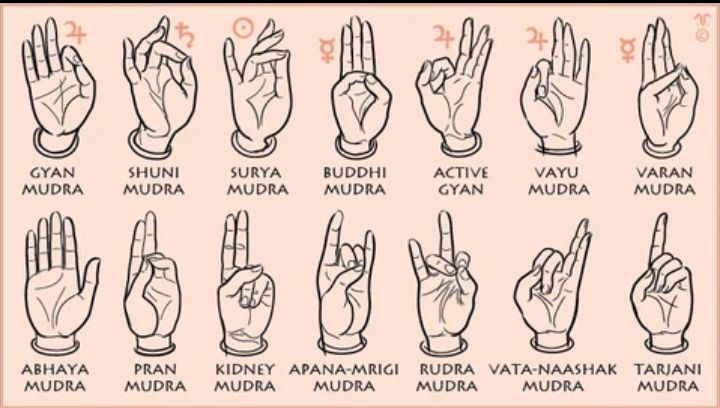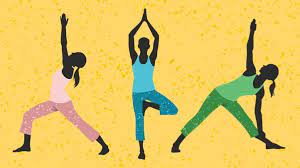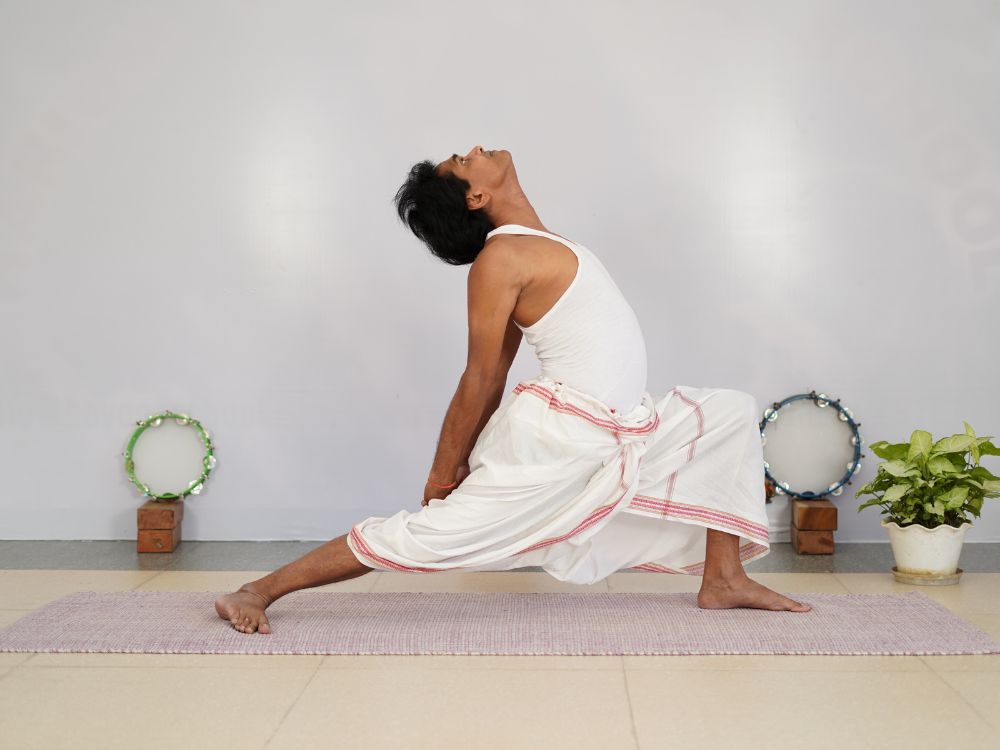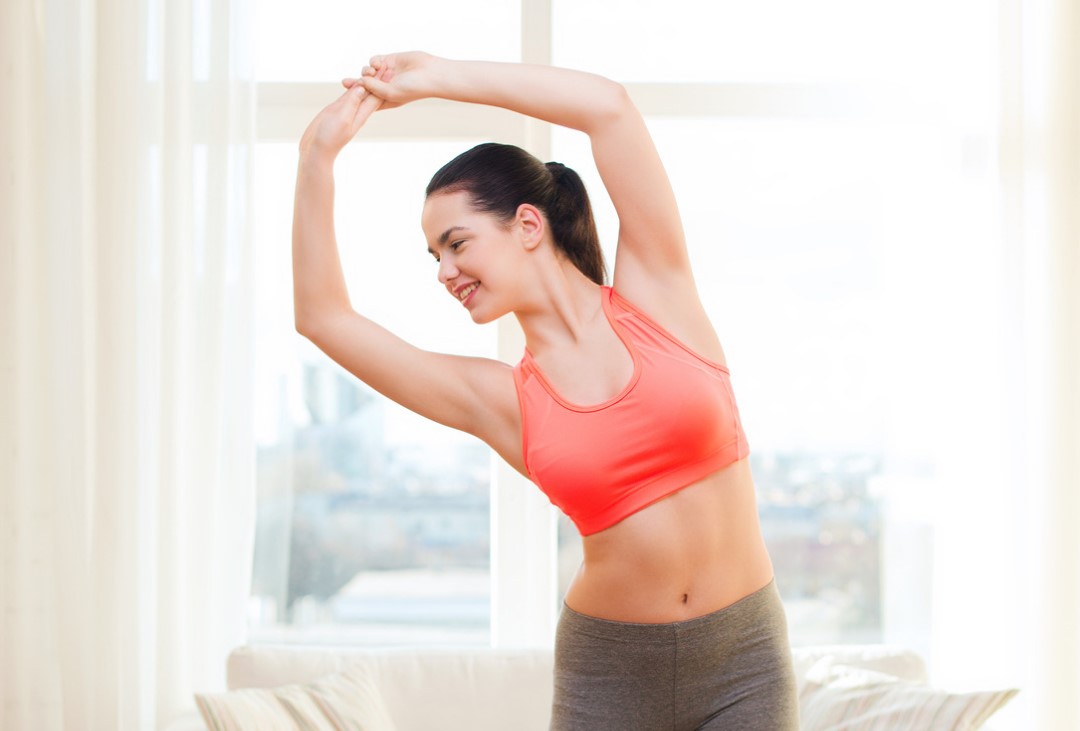What Are Mudras and Their Benefits
So, you may have been hearing the word, ‘mudra’ for a long time now. If you learnt how to dance, you would have used mudras in your dance forms as well. The unique shapes and forms that you make, are called mudras, in clear words. When you join both the hands in a prayer, it also translates into mudras. So, mudras are nothing but different hand gestures, along with the fingers, which can signify different things. Now, mudras have a significance and definite purpose, as well. They can also help in chakra balancing. You can learn and master the various mudras, in the 200 hour yoga teacher training in rishikesh.

Mudras In Yoga
So, by now, you may know that mudras are seals or gestures, which you make with your hands and fingers. The practice of these mudras, help to channelize the life force. There are various types of mudras, like hand mudras, body mudras, and consciousness mudras. However, you will most commonly come across the hand mudras, while doing yoga in rishikesh.
Before, you start exploring the various kinds of mudras, it is important that you know their inherent connection with Ayurveda. It goes without saying, that Ayurveda is the science of the life. And, yoga or mudras are its applications. In the very same context, you must be aware that there are five elements, which govern all of us. They are air, fire, earth, water, and space. A healthy body generally has a balance of all these elements. However, if there is an imbalance in one of these elements, you may be physically affected or mentally. The five elements correspond to five fingers with each finger representing one element. You can actually manipulate the Prana, to increase it or decrease it, and send it to a certain part of the body.
- The Thumb represents fire element
- The Index finger represents air element
- The Middle finger represents space element
- The Ring finger represents earth element
- The Little finger represents water element
Likewise, there are five different kinds of Prana.
They are Apana, Samana, Prana, Vyana, and Udana. Let us find out a bit more about them today. Furthermore, you can also learn about these in the yoga training course.
- Apana is the Prana, that affects functions such as excretion and sweating.
- Samana is required for digestion and metabolic activities.
- Prana is the one, which you need for cardiac functioning.
- Vyana is the Prana that is required for blood circulation and overall movement.
- Udana like required for most sensory activities, like seeing, hearing, thinking, etc.
Mudras can be used for balancing both the hemispheres of the mind. The same applies to the body as well. The mortal being has two hands, and in the same manner, we have two sides. One of the sides is male, and the other is female. The sun governs the right, and the moon, the left. Mudras also facilitate meditation and yoga practice. If you happen to join the 300 hour yoga teacher training in rishikesh, you will study about the mudras, in full details.
Most Common Mudras
- Anjali Mudra– It is the most common mudra, which you will come across on a day-to-day basis. It is as simple as doing the ‘Namaste’. Moreover, this mudra has a lot of physical as well as spiritual significance. It mainly unites the body, by connecting the hemispheres of the brain. Thus, bringing peace and clarity. It also helps one to feel love and gratitude. You can do it almost anywhere.
Simply bring both the palms together, and position the same in front of the heart, with the fingers pointing upward. You need to press the hands evenly into one another. Most yogis can be seen doing the practice while sitting in the Sukhasana. However, it is not mandatory to do the mudra, in sitting position only. You can also do it in standing position, in the Tadasana and Vrikshasana. You can learn, practice and master such mudras at Hrishikesh Yoga School, under the aegis of the best teachers of yoga.
- Gyan Mudra– It is one of the most powerful mudras, if you want knowledge and wisdom. That is why, it is widely practiced by sages and seers. You can also boost your creativity, by practicing this mudra. The mudra is excellent for your intellectual capacity. Yogis can develop a deep level of calmness, if this mudra is practiced during meditation. You must practice mudras, according to yogic guidelines, to get the maximum benefits from them.
Sit down in a comfortable position, like Padmasana. Additionally, you can also sit in Vajrasana. You have to place the hands on your knees, with the palms facing upwards. Subsequently, you have to join the tip of the index finger, with the tip of the thumb. The other fingers are stretched open. Now, you need to close the eyes, and concentrate on your breathing. This is how, you have to practice Gyan mudra.
There are some amazing facts about this mudra, which you ought to know. Buddhists also practice this mudra, but call it Vitarka mudra. The only difference is that, they practice the mudra, by keeping the hands close to the heart, with the palms facing the body.
- Dhyana Mudra– It is a great mudra, which you can do along with meditation. It helps in self-reflection as well. Many examinees have found it to be useful, before examinations. The mudra mainly activates the fire element. Jataragni and Tejas agni, are both satiated by the practice of this mudra. You can sit comfortably, in any meditative pose. While doing so, you have to keep the spine straight. Firstly, you need to keep the left hand on your lap, with the palms facing upwards.
Now, you have to place the right hand on the left hand, with its backside touching the palms. Thereafter, you have to bring the tips of the thumbs in contact with one another. This forms a triangular structure. Close your eyes, and breathe normally. You can hold the hands in this position for 15 minutes, or longer. As the name suggests, this mudra, will assist in your meditative stance. It also stimulates the Ida and Pingala nadi.
- Varun Mudra– The next mudra, which we are going to talk about here is the Varun mudra. It helps to keep the body hydrated. Moreover, it also enhances the softness of the skin texture. It promotes mental clarity and fluidity, as well. If you practice this mudra on a daily basis, you will always be quenched. In Sanskrit, it is also called ‘Jal Vardhak Mudra’. You have to do this mudra, by joining the tip of the little finger with that of the thumb tip. Water is mainly seen as a symbol of freedom, due to its flowing nature. Moreover, humans are mostly made of water. So, any imbalances related to water, can rightly be solved with the performance of this mudra. You will also be able to ward off diseases like dehydration, fatigue, and dryness, by practicing this mudra regularly. It also stimulates the sacral chakra. If you happen to join a yoga course, then it is most likely that you will learn about this mudra.
- Padma Mudra– The mudra is associated with the heart chakra. If you practice this mudra on a daily basis, your heart center will be cleared. Some yogis also call it the Lotus mudra or Lotus Seal. The symbolism of lotus is quite common in several religions. A lotus grows in muddy places, but the journey through the dirt culminates with the beauty above the muck. You can compare the journey of the lotus with that of yours. All the darkness vanishes, when you evolve. After the period of growth comes the period of enlightenment. The same principle applies to yoga. The mudra is also associated with the Hindu Goddess Lakshmi.
You need to practice the mudra, in accordance with the guidelines, which your learned teachers will give you in the yoga class. Firstly, you have to bring both the hands together, and join both of them, to form the Anjali mudra. The heels of the palms must touch one another. You have to keep the heels, the little finger, and the thumbs joined with one another, while peeling the rest of the fingers away. It forms a circle. You can hold the mudra, for at least 5-10 minutes. This mudra will help you to remember about bliss and love, no matter what the situation is like. It also reminds you of your own inner beauty. It is also great for the Anahata chakra or the Heart chakra.
Read The Blogs: How to Activate Chakras in Human Body
Few Mudras Associated With The Chakras
As you already know, that the elements correspond to the various fingers. In the same manner, you can use the mudras for chakra healing.
- Prithvi Mudra is use for activation and stimulation of the Muladhara chakra. Prithvi means earth. And, the Muladhara chakra corresponds to the grounding nature. It also connects one with inner stability and motivation. This is one of the mudras, which can help you to release toxins from the body. This is a very simple mudra, in which your ring finger and the thumb tip meets at the center of the palm. The hands are pointed towards the sky.
- Agni Mudra is another mudra, which is connected to one of the chakras. It is connected to the Manipura chakra, which manifests itself as the fire element. If you practice this mudra on a daily basis, your digestive fire will be stimulated. Moreover, your inner light is also ignited. You can gain clarity on your life, apart from boosting your self-esteem. According to guidelines, you have to fold the ring finger on your palm, and rest the base of the thumb on the top of the ring finger.
- Vayu Mudra is the mudra which affects the Anahata chakra, along with the Padma mudra. It mainly balances the air element in the body, and brings about alignment with the heart chakra. It can also eliminate restlessness. The blocked air in your nadis, is also released as a result of practice of this mudra. You may get rid of ailments like Sciatica and knee pain, as well. In this mudra, the thumb crosses over the tip of the index finger, and rests over there. The other fingers are extended.
- Aakash Mudra is a great practice, to activate and stimulate the Throat chakra. Many yogis also address it as the Shuni mudra. You will also get relief from issues like locked jaws and high blood pressure, if you practice this mudra on a regular basis. Your consciousness is also boosted, as a result of this mudra practice. To perform this mudra, you simply have to join the tip of the middle finger, with the tip of the thumb, and extend the remaining fingers. Regular practice of this mudra, can also increase the calcium content in your body, so boosting bone health and teeth health as well.
- Hakini Mudra is one of the mudras, which will likely benefit the Third Eye or Ajna chakra. It is a mudra which is associated with the divine energy. If you want to open your Third eye, then this is the mudra which you need to practice. In this mudra, you simply have to bring the fingertips of both hands in contact with one another, and imagine that you are holding a ball of light. Position the hands before the heart. You can also raise the hands in this gesture towards the Third Eye.
These are a few mudras, which you will learn in the 200 Hour Yoga TTC in Rishikesh. Get absolute knowledge from the teachers at Hrishikesh Yoga School. Proper practice of these mudras can soak you in divinity.





